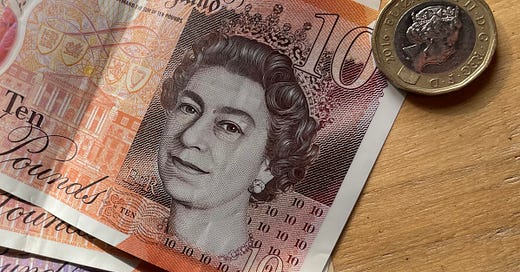This article follows an earlier piece asking ‘Does crime pay in the EU’.
Essentially, the way we currently judge whether crime pays is to add up how much might be confiscated and compare it with how much is confiscated. There are multiple faults with comparing these two numbers and the result is the daft 98% (of criminals keep the money) proffered by Europol and the even more absurd 99.74% trotted out by the National Audit Office. These “statistics” are just rubbish.
The amount that might be confiscated involves guessing the size of the illegal economy. At the moment, we can’t even accurately work out the legitimate economy and that is audited, regulated and publicly double-checked on a regular basis by thousands of commentators. The illegal economy meanwhile, is literally run by criminals; it is not audited or regulated and is riddled with dishonesty. Even the authorities that try to estimate the illegal economy are prone to double counting. Wholesale drug seizures, for example, are routinely quoted at the retail price. This is a particularly egregious practice given the enormous mark-ups in illegal trading.
Meanwhile the amount recovered by law enforcement agencies is often unpublished and, incredibly, not even known. Many EU countries have no systematic counting method. The Europol statistic was derived from an incomplete survey of EU Member States.
The NAO statistic is, simultaneously, both more precise and more misleading. The NAO compared the estimate for the amount lost by victims of fraud with the amount recovered from drug dealers. You couldn’t make it up. But they did.
The NAO Report was published ten years ago, but it matters for two reasons. Firstly, the NAO Report is still being used to inform current proposals by the Law Commission to improve (or weaken, depending on your point of view) the UK’s asset recovery regime. Secondly, for the last ten years their catastrophised statistic has defined the UK asset recovery regime as, well, catastrophic. This is despite the fact that NAO Report found that the regime actually made a profit and the fact that the law enforcement agencies had broken their own record for asset recovery in each of the ten years preceding the Report. At the time, it looked distinctly odd. Given the havoc wreaked across the criminal justice system in the UK in the last decade, it now looks like the opening salvo of an attack on law and order.
So how could the EU and the UK change the asset recovery narrative so that it looks more realistic?
Firstly, what is the question? Mine is simple, does crime pay?
To find out, we need to do some financial investigation and we can only do this to people we catch. A partial answer to the question above might be:
“We [insert country] financially investigate everyone we catch for crimes motivated by money.”
This does not have to be exhaustive; in two separate UK forces a shoplift of a bottle of whisky and a bilking of a tank of petrol from a garage led to asset recoveries of £1 million each, enough to hire the financial investigator in each force for 20 years. In each case the thief was a millionaire drug dealer who couldn't be bothered to pay (because he was a criminal, obviously). In each case the LOCAL financial investigator ATTACHED TO THE POLICE STATION was doing basic wealth checks on routine crimes.
A better answer might be: “We [insert country] got 10,000 financial orders last year and 55,000 people were convicted of money motivated crimes. This gives a financial ‘clear-up rate’ of 18%”.
An 18% financial-clear up rate actually ‘feels’ very high, because the vast majority of criminals, in my experience, “offend to spend” and have no assets or savings worthy of a financial order. I would assert that an 18% clear-up rate is probably at the top end of expectation. It means that almost everyone with money to confiscate had it confiscated. Many will have spent years creating hundreds of crime victims, only to lose all the proceeds of crime to the court. My assertion needs more work, I think, some in-depth research into the proportion of defendants appearing in the Crown Court who have been shown to lack assets. I think it is the vast majority, but I don’t know. It will also vary from country to country.
I think most countries would be capable of working out a financial clear-up rate. Most countries do collect statistics on the numbers of people they catch (arrests, indictments, convictions, etc.). Most countries can collate the number of financial investigations they authorise or know how many financial investigators they have and can do the math.
I think this is an achievable and interesting statistic. It could be used to assess a regime’s progress and guide the way to further research on the impact of asset recovery on crime rates. The 18%, by the way, is based on actual figures for the same year used by the NAO to trash the UK’s reputation. I think it shows the UK in a different light. Far from being a catastrophe, it looks like crime doesn’t pay, if you are caught and you have assets. Given that the Financial Action Task Force reckons that 80% of countries do not confiscate assets from criminals they catch and convict, this seems an important finding. It could help future FATF evaluations of Immediate Outcome 8 (the confiscation of crimnal assets).
I am now wondering if crime pays in the EU. I don’t know, but this is not rocket science, just arithmetic.





Thank you!
This is a refreshing approach!